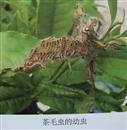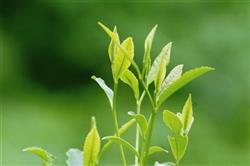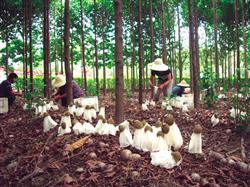Tea planting techniques: what are the diseases and insect pests of tea trees in summer?

What are the diseases and insect pests of tea trees in summer? Please introduce and control methods in summer tea garden focuses on the control of tea cake disease and tea bud blight, and the focus of insect pests is tea caterpillar and tea inchworm. Tea cake disease mainly harms new shoots and tender leaves, the disease spot is sunken on the front of the leaf, the back is steamed bread-like protuberance, and produces gray-white powder spores. During prevention and control, 0.2%-0.5% copper sulfate solution can be sprayed, once every 7 days, for 2 times. The diseased leaves caused by tea bud blight are twisted, irregular and scorched, and the disease spots are black or dark brown, which generally occur on the tender leaves of summer tea. 70% methyl topiramate can be used per mu and sprayed with 50 kg of water. Spray every 7 days. Tea caterpillar, tea inchworm and other larvae eat the tender leaves, and when the buds are serious, they can eat all the leaves, and can be sprayed with 90% wettable trichlorfon per mu. Click to get more tea planting techniques click to get more flower planting techniques
- Prev

Tea planting technology: how to improve tea quality and tea output?
How to improve the quality and output of tea? Please introduce methods to improve tea quality tea output can refer to the following methods: first, fertilization time. In spring, summer and autumn, when the new shoots of tea sprouted and grew one bud and one leaf for the first time, spray it in the early morning, evening or cloudy day on a windless sunny day, spraying 2 or 3 times a week. Spray to the leaf.
- Next

Dictyophora planting: how can Dictyophora produce high yield?
How can Dictyophora be planted with high yield? Please introduce the method of Dictyophora planting in order to obtain high yield, we should pay attention to the following points: 1. Cultivation site: choose sandy loam woodland with convenient drainage and irrigation, and make a border under a forest with a canopy degree of 80%, with a depth of 15-20 cm, a width of 40 ─ 50 cm, and a north-south direction.
Related
- Fuxing push coffee new agricultural production and marketing class: lack of small-scale processing plants
- Jujube rice field leisure farm deep ploughing Yilan for five years to create a space for organic food and play
- Nongyu Farm-A trial of organic papaya for brave women with advanced technology
- Four points for attention in the prevention and control of diseases and insect pests of edible fungi
- How to add nutrient solution to Edible Fungi
- Is there any good way to control edible fungus mites?
- Open Inoculation Technology of Edible Fungi
- Is there any clever way to use fertilizer for edible fungus in winter?
- What agents are used to kill the pathogens of edible fungi in the mushroom shed?
- Rapid drying of Edible Fungi

